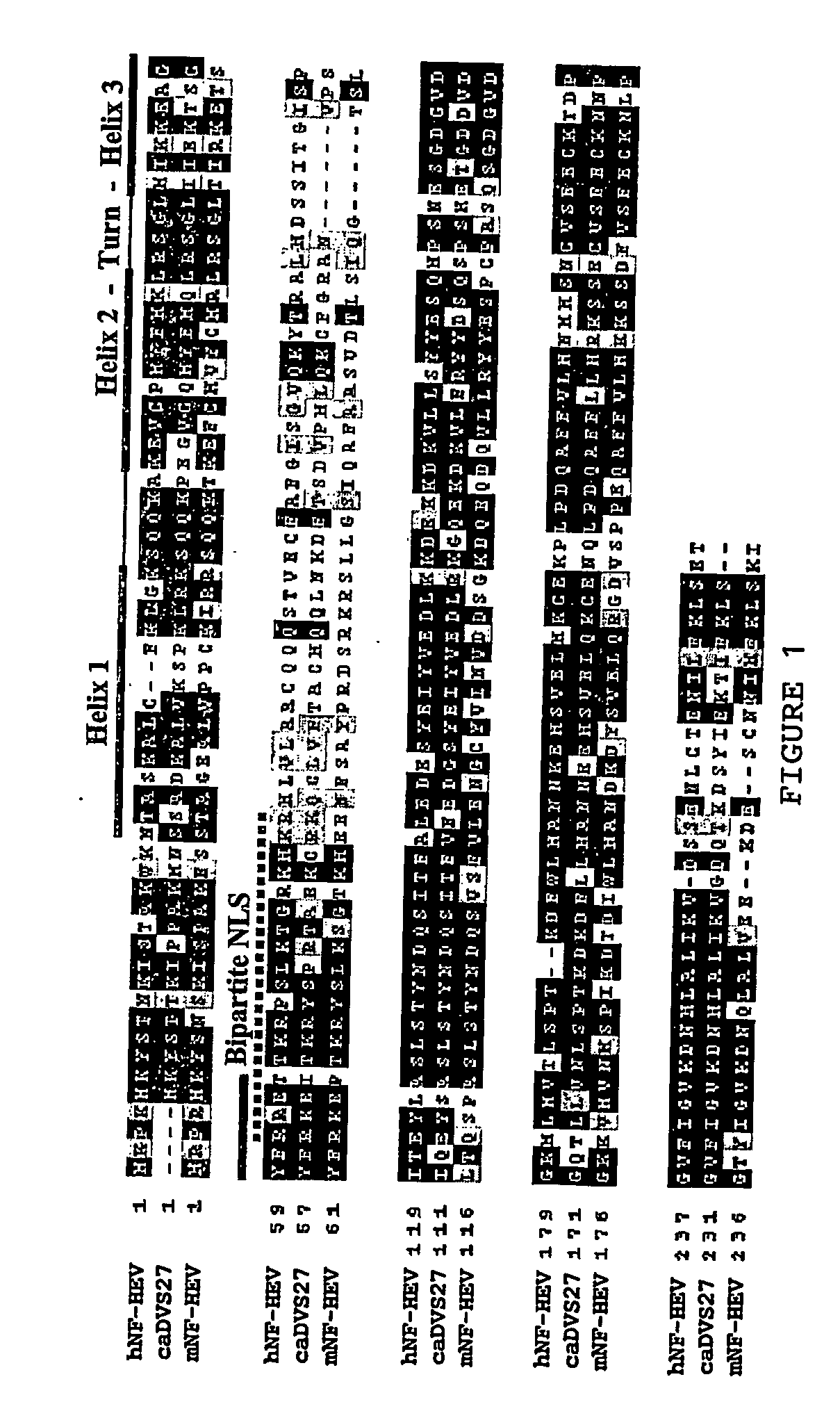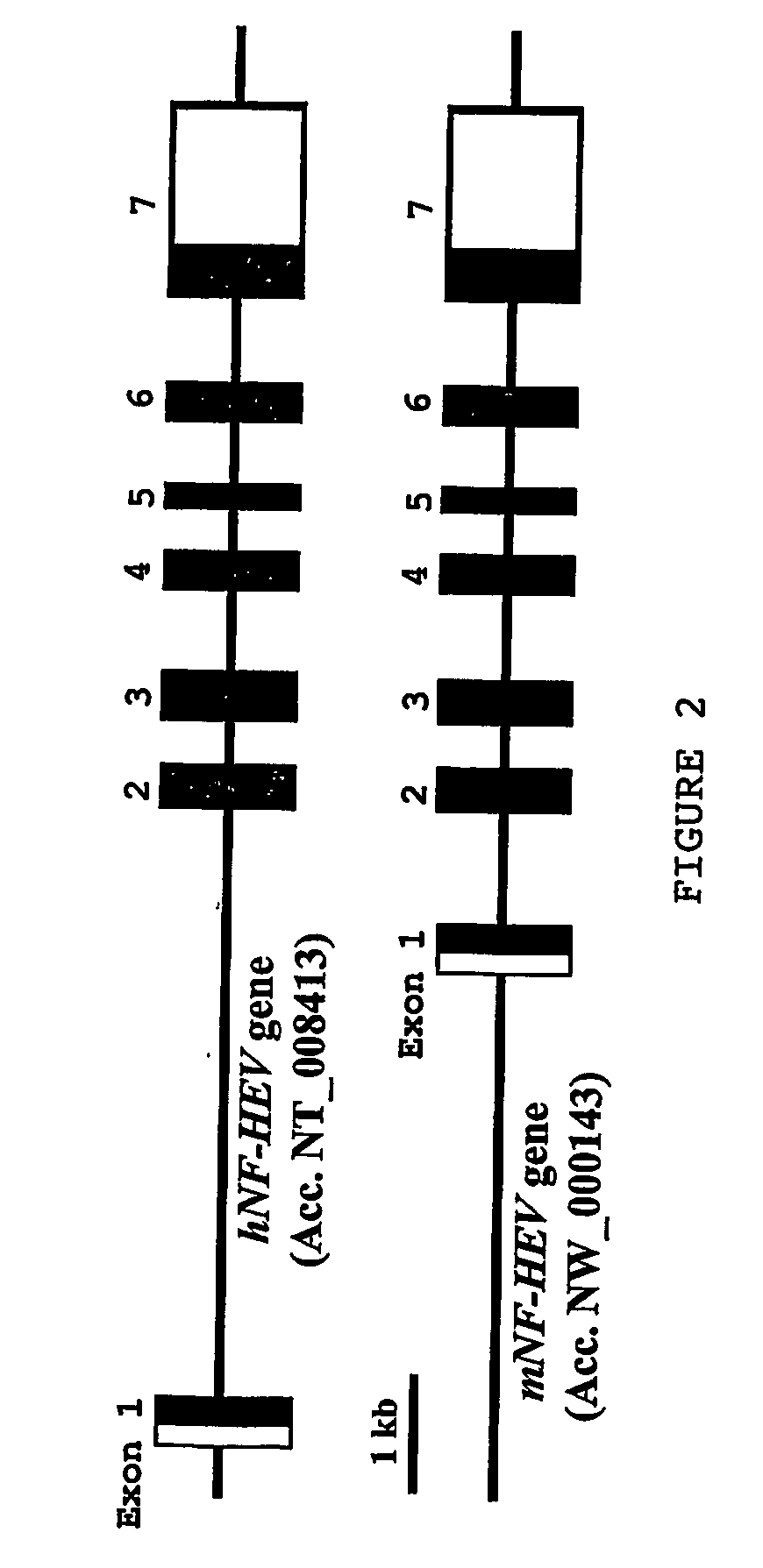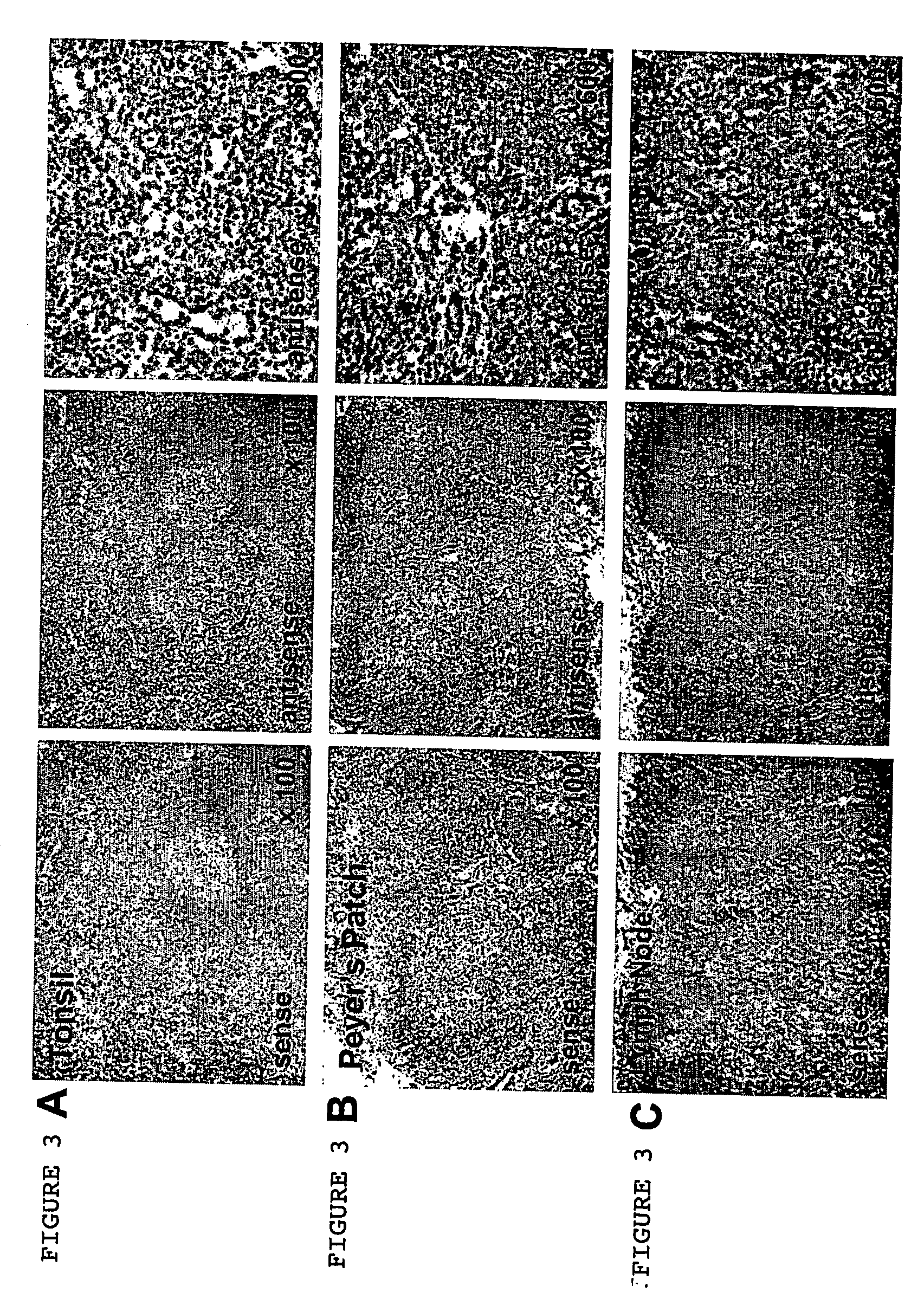Nf-hev compositions and methods of use
a composition and hev technology, applied in the field of biotechnology and medicine, can solve the problems of largely undefined ec heterogeneity, achieve the effects of reducing lymphocyte extravasation, promoting inflammation in endothelial cells, and reducing adhesion of lymphocytes
- Summary
- Abstract
- Description
- Claims
- Application Information
AI Technical Summary
Benefits of technology
Problems solved by technology
Method used
Image
Examples
example 1
Suppression Subtractive Hybridization (SSH)
[0397] To identify cDNAs preferentially expressed in HEVEC, a PCR Select library was generated from HEVEC cDNA subtracted against PMEC cDNA (HEVEC-PMEC). MECA-79-positive HEVECs were purified from human tonsils and PMECs were isolated from nasal polyps. SSH was performed as described (Girard et al. (1999) Am J Pathol 155:2043-55) with some modifications. Total RNA was isolated from highly purified HEVECs (Baekkevold et al. (1999) Lab Invest 79:327-36) cultured for 2 days with an RNeasy kit (Qiagen). PMECs were prepared from nasal polyps as described (Jahnsen et al. (1997) Am J Pathol 150:2113-23), stained with anti-CD34-FITC (Diatec), and purified by cell sorting (FACSVantage, Becton Dickinson). PMEC mRNA was isolated by μMACS mRNA isolation kit (Miltenyi Biotech). To obtain sufficient amounts of double-stranded (ds) cDNA for subtraction, both PMEC and HEVEC cDNAs were preamplified with the SMART PCR cDNA synthesis kit (Clontech). cDNAs sy...
example 2
Differential Hybridization Screening with Subtracted Probes
[0400] A total of 960 individual recombinant (white) colonies were picked and used to inoculate ten 96-well microtitre plates with LB medium and 100 μg / ml ampicillin, which was incubated overnight and diluted 1:4 with H2O. This diluted bacterial culture (1 μl) was used to PCR amplify cloned inserts in 25 μl reactions with M13rev and M13for (−20) primers flanking the vector cloning site under the following conditions: 95° C. for 5 min and then 30 cycles of the following temperature / time sequence: 94° C. for 30 sec, 55° C. for 30 sec, and 72° C. for 1 min. The PCR reaction products (12 μl) were then loaded onto duplicate agarose gels (1.6% w / v), denatured, and blotted onto nylon membranes. The filters were hybridized with equivalent amounts of 32P-labeled cDNA of similar specific activity derived from HEVEC and PMEC total RNA as described in Example 1.
[0401] Differential screening of these 960 clones with radioactive probes ...
example 3
Sequence Analysis of Differentially Expressed Genes
[0402] Miniprep DNA of the differentially hybridizing clones form Example 2 was prepared and sequenced at Medigenomix (Marti ed, Germany) with the plasmid-specific TOPO1 and TOPO2 oligonucleotides.
[0403] Sequencing of these cDNAs showed that the most abundant family of genes was mitochondrial enzymes (12 clones), particularly transcripts for cytochrome c oxidase 1. This was in line with our previous report (Girard et al. (1999) Am J Pathol 155:2043-55) that HEVECs express higher levels of these enzymes than other ECs. Our screen also identified three independent clones corresponding to the secreted matricellular protein hevin, one of the known markers of tonsillar HEVECs (Girard et al. (1999) Am J Pathol 155:2043-55; Girard and Springer (1995) Immunity 2:113-123). Using two distinct polyclonal antisera, we confirmed preferential expression of hevin in MECA-79-positive-HEVECs from human tonsils, as well as MadCAM-1-positive-HEVECs ...
PUM
| Property | Measurement | Unit |
|---|---|---|
| time | aaaaa | aaaaa |
| temperature | aaaaa | aaaaa |
| temperature | aaaaa | aaaaa |
Abstract
Description
Claims
Application Information
 Login to View More
Login to View More - R&D
- Intellectual Property
- Life Sciences
- Materials
- Tech Scout
- Unparalleled Data Quality
- Higher Quality Content
- 60% Fewer Hallucinations
Browse by: Latest US Patents, China's latest patents, Technical Efficacy Thesaurus, Application Domain, Technology Topic, Popular Technical Reports.
© 2025 PatSnap. All rights reserved.Legal|Privacy policy|Modern Slavery Act Transparency Statement|Sitemap|About US| Contact US: help@patsnap.com



